Gma's and Gpa's Great Adventures
It's a Good Morning with Good News! We are now scheduled to transit the Panama Canal on March 10th! YAY!!
We moved out to Limon Bay this morning. Limon Bay is a natural harbor at the Panama Canal’s northern end that allows ships to drop anchor. Most large ships anchor out in the ocean. The bay is about 4.5 miles long and 2.5 miles wide and is protected from the rough seas by long breakwaters.
March 6 - 9
It is interesting watching the large variety of boats – huge freighters, cruise ships, beautiful large sailboats, rough & rocky little sailboats – move in and out of the bay and all their lights at night. For all the large ships and sailboats waiting to go thru the canal, traffic is surprisingly light and sporadic. There are some kiteboarders and a
RUTH METZ
32 chapters
29 Jan 2023
The Panama Canal
March 06, 2023
|
Colon to Panama City
It's a Good Morning with Good News! We are now scheduled to transit the Panama Canal on March 10th! YAY!!
We moved out to Limon Bay this morning. Limon Bay is a natural harbor at the Panama Canal’s northern end that allows ships to drop anchor. Most large ships anchor out in the ocean. The bay is about 4.5 miles long and 2.5 miles wide and is protected from the rough seas by long breakwaters.
March 6 - 9
It is interesting watching the large variety of boats – huge freighters, cruise ships, beautiful large sailboats, rough & rocky little sailboats – move in and out of the bay and all their lights at night. For all the large ships and sailboats waiting to go thru the canal, traffic is surprisingly light and sporadic. There are some kiteboarders and a


young wake boarder pulled by a dinghy for our entertainment. We can still dinghy into the marina for lunch, drinks and pool time and meeting other cruisers - and pick up our watermaker parts.
March 9
Work on the watermaker and prepare for tomorrow's early morning start and full day transit.
FYI
A canal across the Panama Isthmus was a dream for 100s of years to shorten ships’ voyages. After many expeditions and plans, the French attempted building the Panama Canal in the late 1800’s but failed due to disease, a high death rate and construction difficulties. In the meantime a railway was built by the U.S. (opened 1855) in response to the large passenger and freight traffic demand during the California Gold Rush. This was the main route of moving people and goods to and from the east and west coasts. In 1904, the United States, under President Theodore Roosevelt, took over the Panama Canal project and opened the canal on August 15, 1914 (with little celebration due to the start of WWI). The canal cost $375 million to construct. This would be over $8 billion in today's dollars.

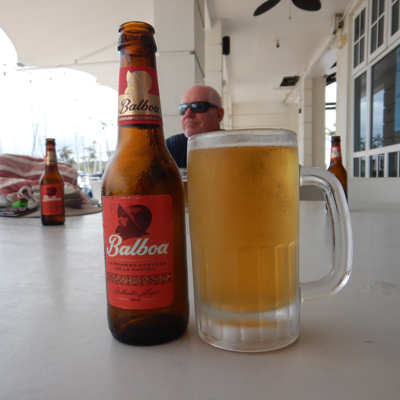
The Panama Canal is an approx. 50 mile long man-made waterway that shortens the voyage for ships sailing between the east and west coasts of the US by 8,000 nautical miles and 5 months of travel time. (A nautical mile is 15% longer than a land mile.) Ships used to have a long and dangerous voyage around Cape Horn, the southern tip of South America. The Panama Canal was a huge boost to world trade.
Building the canal was not easy. Thousands of workers from around the world helped to build the canal. At one point there were as many as 45,000 men involved in the project. Workers had to battle disease, mudslides, poisonous snakes, scorpions, and poor living conditions.
A huge engineering project crossing the Isthmus of Panama at its narrowest point (the “easiest” place to build), there were three major construction projects involved in making the canal:
1. Building the Locks - Locks on each side of the canal raise and lower boats a total of 85 feet. The locks are immense. Each lock is 110 feet wide and 1,050 feet long. They have huge concrete walls and giant steel gates. The steel gates are over 6 feet thick and 60 feet tall.
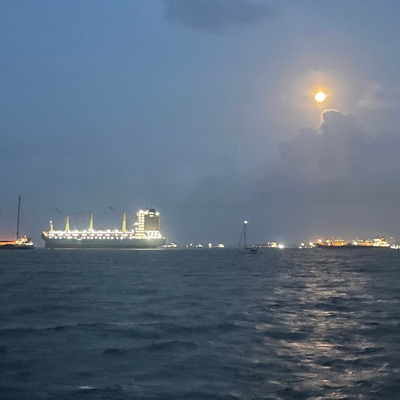
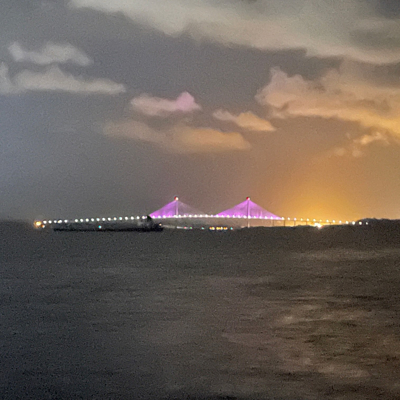
2. Building the Gatun Dam - Created in 1913 by damming the Chagres River, Gatun Lake is a large 21 mile long freshwater lake, at the center of the canal, providing the water needed to operate the locks. Ships follow marked channels in Gatun Lake between locks.
3. Digging the Culebra Cut - This section of the canal had to be dug through the mountains of Panama. Dealing with landslides and falling rock made this the most difficult and dangerous part of the canal's construction.
The railway was vital in assisting the construction of the canal. The railroad's route was changed as a result of the creation of Gatun Lake, which flooded part of the original route.
In 1999, the USA transferred control and management of the Panama Canal to the Panamanian government.
The Panama Canal expansion project, completed in 2016, doubled the capacity of the Panama Canal by adding a new lane of traffic allowing for a larger number of ships, and increasing the width and depth of the new lanes and locks allowing larger ships (carrying 14,000 containers, over 2X the previous max) to pass.
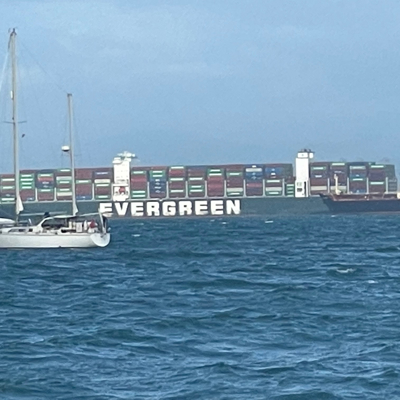
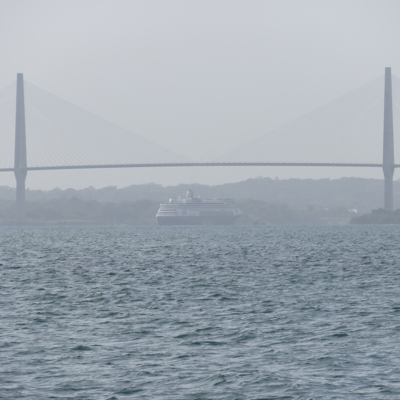
Over 14,000 ships pass thru the canal each year. Traveling through isn't cheap. The average toll is around $54,000 with some tolls going over $300,000. This is still a lot cheaper than having to go all the way around South America. In 1928, Richard Halliburton swam the length of the Panama Canal. He only had to pay a toll of 36 cents. Nutmeg's cost to transit, including the agent & toll, renting fenders, line handlers (2) and advisor will be approx. $2800 plus our extra marina time.
The line handlers, Alex & Manuel, came onboard this evening, had dinner together, all lines and large fenders are ready for an early morning and big day tomorrow! You might be able to see us on a live cam. Gatun locks in am, and Pedro Miguel and Miraflores lock later. https://multimedia.panama-canal.com/Webcams/miraflores.html
XO XO Gma & Gpa
P.S. Some WRECKS for your viewing pleasure. Enjoy.


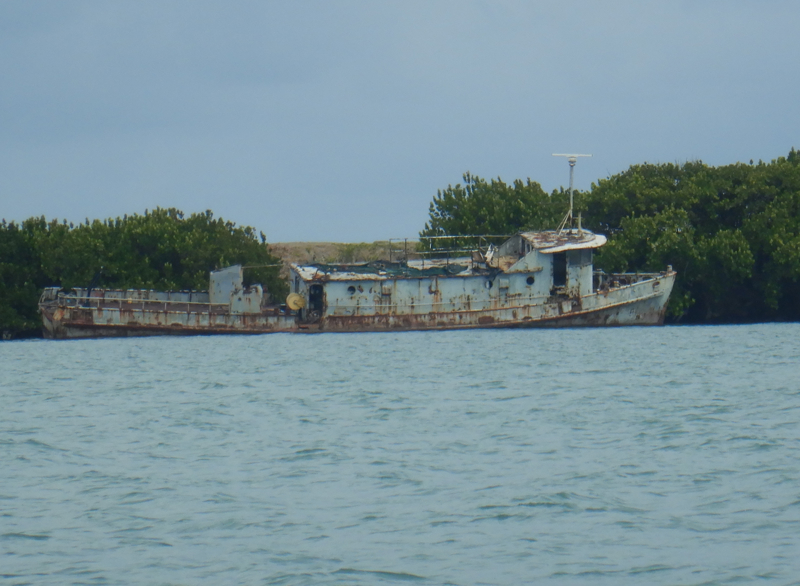

1.
Countdown
2.
...and We're OFF!
3.
...and waiting.
4.
Sailing Away!
5.
The San Blas
6.
Panama
7.
The Panama Canal
8.
The Transit
9.
Panama City
10.
27 Days at Sea
11.
The Marquesas
12.
Tuamotu Archipelago
13.
Moorea
14.
Tahiti
15.
On Vacation
16.
Raiatea
17.
Taha'a
18.
Huahine
19.
More Moorea
20.
Tahiti 2
21.
Sail On, Sailor
22.
Rarotonga
23.
Niue
24.
Vava'u
25.
Savusavu, Vanua Levu
26.
Yasawa Islands
27.
Viti Levu
28.
Viani Bay
29.
Taveuni Island
30.
Fiji Time
31.
Cyclone Season
32.
New Zealand
Share your travel adventures like this!
Create your own travel blog in one step
Share with friends and family to follow your journey
Easy set up, no technical knowledge needed and unlimited storage!